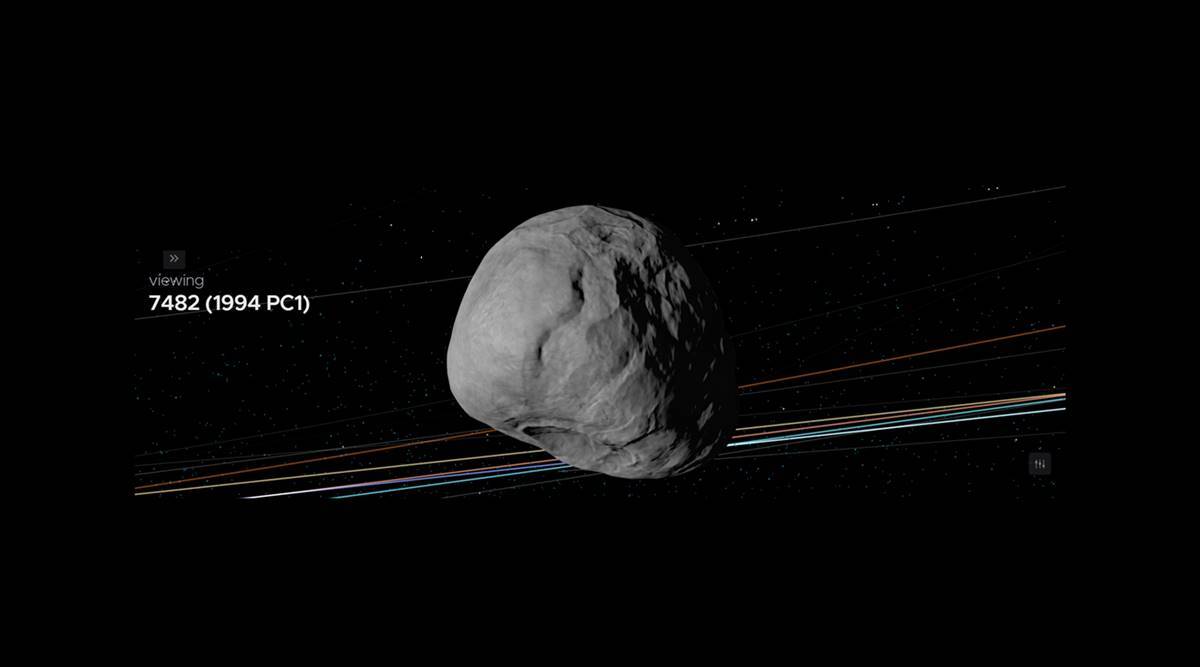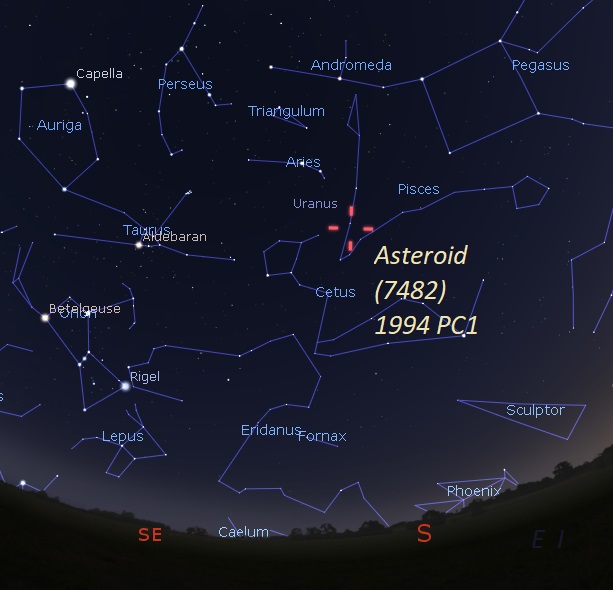
Prepare your star-gazing toys and buckle up for a sight to remember.
Last week, NASA announced that a huge asteroid will be passing by the earth in its closest approach. And that day has come and we will finally be able to look at the spectacle.

But fret not, just because we say it is passing by, it is still very very far to have an impact. Here is everything you need to know about the asteroid and how to track it:
Bigger Than the World’s Tallest Building
The supposed asteroid called 7482 (1994 PC1) was first discovered way back on August 9, 1994, by Robert McNaught, an astronomer at Siding Spring Observatory situated in Coonabarabran, Australia.
National Aeronautics and Space Administration, NASA classifies 1994 PC1 as a stony asteroid. It is also classified as a near-Earth object and is marked potentially hazardous asteroid of the Apollo group.
The asteroid has an orbital period of 569 days around the sun and the absolute magnitude of 1994 PC1 is 16.8. The asteroid is 1052 m that is 3, 451 feet in size. To scale, Burz Khalifa, the world’s tallest building is 830 m long which is 2, 723 feet.
From estimates and studies, an asteroid of this size strikes the earth every 600,000 years approximately.

Is It Safe?
Well, many of you would have watched the recently released movie “Don’t look up” and would be feeling paranoid about this up-and-coming android. But not to worry, dear ol’ NASA has confirmed that the 1994 PC1 will be passing by the planet and not hitting it and sending us all to oblivion.
Even at its closest approach to planet Earth, the 1994 PC1 will still be 5 lunar distances away from us, that is 5 times the distance of the moon from earth. So I’d say we are pretty safe.
When and How to Watch It?
The asteroid 1994 PC1 will be approaching closest to earth today on January 18th at 4:51 pm EST. In terms of Indian Standard Time, the time would be 2:45 am on January 19. The asteroid will be moving at a speed of about 45, 000 miles per hour.

If you have a small telescope, then you might be able to spot the asteroid if you point your telescope at the correct time and location. Other than that, you can watch the asteroid live journey on NASA’s live asteroid tracker using the link mentioned in this tweet:
Near-Earth #asteroid 1994 PC1 (~1 km wide) is very well known and has been studied for decades by our #PlanetaryDefense experts. Rest assured, 1994 PC1 will safely fly past our planet 1.2 million miles away next Tues., Jan. 18.
Track it yourself here: https://t.co/JMAPWiirZh pic.twitter.com/35pgUb1anq
— NASA Asteroid Watch (@AsteroidWatch) January 12, 2022
Last year, NASA launched a mission to deflect the asteroid DART and according to NASA’s studies, no asteroid currently poses a risk of impact with our planet in the next 100 years.